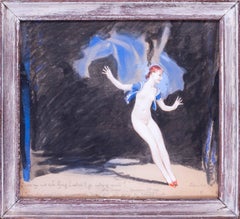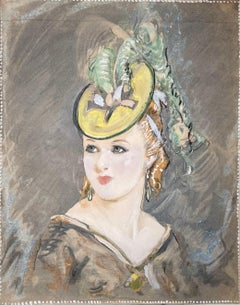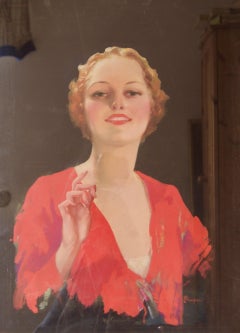William Henry Barribal Art
William Henry Barribal was a London artist, who began his career as a lithographer before going on to study at the Académie Julian in Paris. By the turn of the 20th century, Barribal had become an accomplished painter and designer. He created a series of images that were used on First World War recruitment posters in Great Britain. During the 1920s and 1930s, he created a range of posters for the Schweppes advertising campaign and in 1921, he was contracted to work for Waddingtons, producing work that was used for posters and later a series of playing cards, these works being keenly sought after today. His bold Art Deco posters designed in the 1920s and 1930s for the London and North Eastern Railway are also well known. His wife, Gertrude Louisa Fannie Pitt was his principal model and his work also included cigarette cards on which she appeared. Barribal also worked for various magazines, including the leading fashion journal Vogue and between 1919–38, he regularly exhibited his work. His images of exquisite and fashionable Edwardian women have become classics and the work of many modern fashion artists shows traces of the unmistakable "Barribal style".
20th Century Art Deco William Henry Barribal Art
Paper, Watercolor, Gouache, Pencil
1920s Realist William Henry Barribal Art
Watercolor
Early 20th Century Realist William Henry Barribal Art
Watercolor
1910s Art Deco William Henry Barribal Art
Pencil, Archival Paper, Gouache
Mid-20th Century Art Deco William Henry Barribal Art
Pencil, Gouache
1890s Realist William Henry Barribal Art
Watercolor
1920s Art Deco William Henry Barribal Art
Gold
1930s Realist William Henry Barribal Art
Wood, Paper, Watercolor
1880s Realist William Henry Barribal Art
Watercolor, Cardboard
1930s Art Deco William Henry Barribal Art
Paper, Ink, Gouache
1990s Realist William Henry Barribal Art
Paper, Watercolor
1910s Art Deco William Henry Barribal Art
Ink, Gouache, Paper, Watercolor, Pencil
18th Century Realist William Henry Barribal Art
Watercolor, Ink, Laid Paper, Pen
20th Century Art Deco William Henry Barribal Art
Paper, Gouache
Mid-19th Century Realist William Henry Barribal Art
Gouache, Watercolor, Pencil
1930s Post-Impressionist William Henry Barribal Art
Board, Oil



